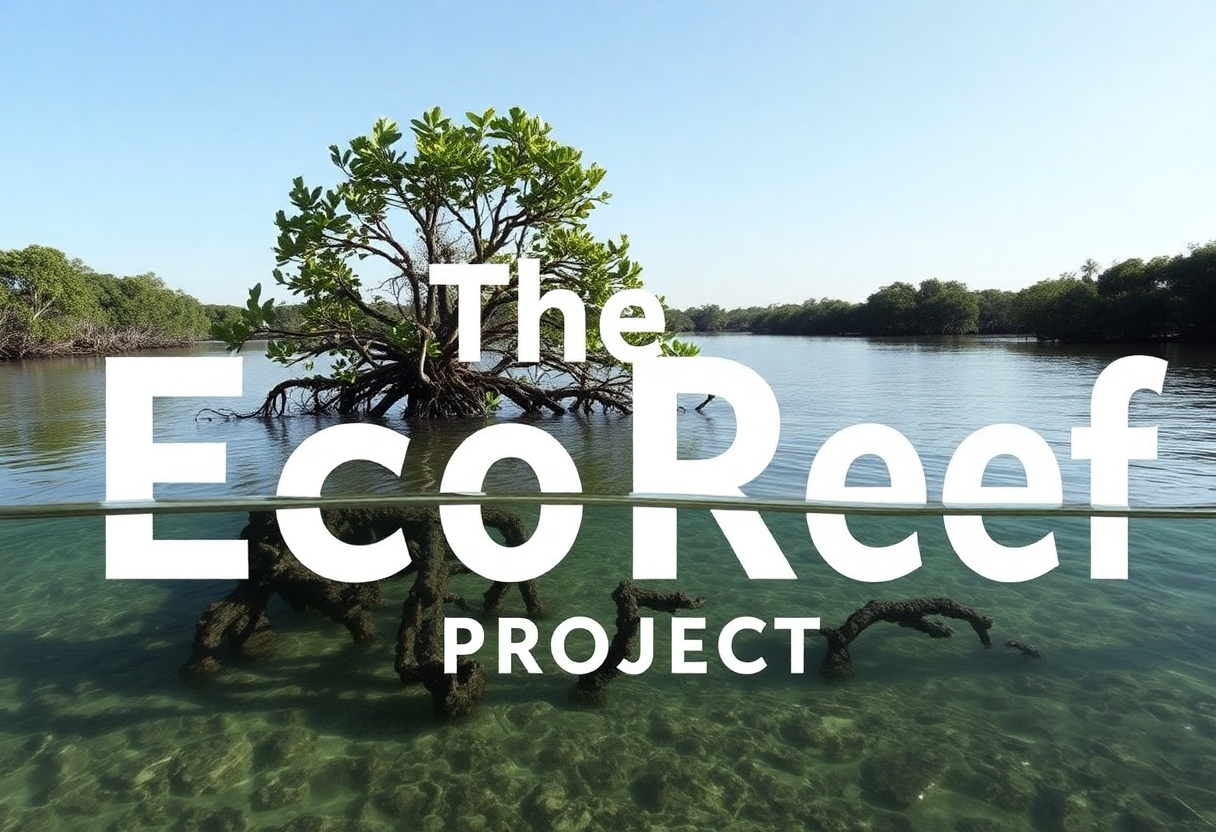In today’s world, the question is not whether businesses should be eco-aware, but rather how they can afford not to be. Regardless of the industry, every business operates within the broader ecosystem of our planet, and thus has a role to play in its stewardship.
The Business Case for Eco-Awareness
Even for companies not directly involved in ‘green’ industries, there are compelling reasons to embrace eco-awareness:
1. Risk Management: Environmental risks, such as resource scarcity and climate change, can have significant impacts on a company’s operations and supply chain. By being eco-aware, companies can better anticipate and mitigate these risks.
2. Regulatory Compliance: Environmental regulations are becoming increasingly stringent worldwide. Companies that are proactive in their environmental stewardship are better positioned to comply with these regulations, avoiding potential fines and reputational damage.
3. Customer Expectations: Today’s consumers are more environmentally conscious than ever before. They prefer to do business with companies that share their values, which often include a commitment to sustainability.
4. Competitive Advantage: Eco-awareness can be a source of competitive advantage. By implementing sustainable practices, companies can differentiate themselves from their competitors, potentially leading to increased market share and profitability.
5. Investor Attraction: More and more investors are looking to invest in companies that demonstrate a commitment to sustainability. By being eco-aware, companies can attract this growing pool of ‘green’ capital.
The Broader Perspective
Beyond the business case, there’s a moral imperative for companies to be eco-aware. Businesses, like all of us, have a responsibility to future generations to preserve and protect our planet. By being eco-aware, companies can contribute to the global effort to combat climate change and promote sustainable development.
Eco-awareness is not just for companies in ‘green’ industries. It’s a crucial aspect of doing business in the 21st century, with significant implications for a company’s bottom line and its broader impact on the world.
The Role of Ecology and Eco-Business in Everyday Business Operations
In the modern business landscape, the focus on ecology and eco-business is not just a matter of legal compliance, but a strategic necessity. Here’s why:
Beyond Legal Requirements
While adhering to environmental regulations is mandatory, businesses that limit their ecological efforts to mere compliance may miss out on significant opportunities. The broader idea of ecology and eco-business encompasses a proactive approach to sustainability, going beyond what is legally required.
Competitive Advantage
Businesses that integrate ecological considerations into their everyday operations often gain a competitive edge. They can differentiate themselves in the market, appeal to eco-conscious consumers, and often operate more efficiently by reducing waste and conserving resources.
Risk Management
Understanding and addressing ecological impacts can help businesses manage risks. Climate change, resource scarcity, and changing consumer preferences are all significant risks that can be better managed with a focus on ecology and eco-business.
Innovation and Growth
The challenges posed by ecological concerns often drive innovation. Businesses that embrace eco-business principles can lead the way in developing new products, services, and processes that meet environmental challenges while creating economic value.
Investor Attraction
Increasingly, investors are looking to support businesses that demonstrate a commitment to sustainability. By adopting eco-business practices, companies can attract investment from these sources.
Corporate Reputation
A commitment to ecology and eco-business can enhance a company’s reputation. Businesses that are seen to be taking a stand on environmental issues often enjoy higher levels of trust and loyalty from their customers.
Pros and Cons of Eco-Sectors and Eco-Business: Past, Present, and Future
————————————-
Past
Pros:
⦁ Innovation: The emergence of eco-sectors and eco-businesses has led to significant innovation, particularly in areas like renewable energy and waste management.
⦁ Awareness: These sectors have played a crucial role in raising awareness about environmental issues and the need for sustainable practices.
Cons:
⦁ Cost: Initially, the cost of investing in eco-friendly technologies and practices was high, which may have deterred some businesses.
⦁ Lack of Infrastructure: In the past, there was a lack of infrastructure and support for eco-businesses, making it challenging for them to operate efficiently.
Present
Pros:
⦁ Market Opportunities: As consumer demand for sustainable products and services grows, eco-sectors and eco-businesses are finding new market opportunities.
⦁ Regulatory Compliance: With increasing environmental regulations, businesses in these sectors are often better positioned to comply and avoid potential fines.
Cons:
⦁ Continued Costs: While costs have decreased over time, eco-businesses may still face higher operational costs compared to traditional businesses.
⦁ Market Uncertainty: While there is growing demand for sustainable products and services, market trends can be unpredictable, posing a risk for businesses in these sectors.
Future
Pros:
⦁ Sustainable Growth: As the world continues to grapple with environmental challenges, eco-sectors and eco-businesses are poised for sustainable growth.
⦁ Resilience: Businesses that prioritize sustainability are likely to be more resilient in the face of future environmental and regulatory changes.
Cons:
⦁ Technological Challenges: As we push the boundaries of sustainable technology, eco-businesses may face technical challenges and the need for continuous innovation.
⦁ Competitive Landscape: As more businesses enter eco-sectors, competition will intensify, potentially impacting profitability.
There are challenges associated with eco-sectors and eco-business, the benefits they bring to our environment and society make them an essential part of our past, present, and future economy.
Eco-Sectors and Eco-Companies & Understanding the Dynamics
Eco-sectors and eco-companies are two interrelated concepts in the realm of sustainable business. Here’s a breakdown of their relationship and the question of “who is in charge of who”.
Eco-Sectors
Eco-sectors refer to segments of the economy that are either inherently sustainable or have the potential to be transformed in a way that contributes to environmental sustainability. Examples include renewable energy, green construction, sustainable agriculture, and waste management. These sectors provide the framework within which individual businesses operate.
Eco-Companies
Eco-companies are individual businesses that operate within these eco-sectors. They commit to sustainable practices, aiming to minimize their environmental impact while still achieving their business goals. Eco-companies can also exist outside of traditional eco-sectors, as any company can adopt sustainable practices.
Who is in Charge?
In terms of “who is in charge of who”, it’s not a straightforward hierarchy. Eco-sectors do not govern eco-companies; rather, they provide the context within which these companies operate. Each eco-company makes its own decisions about how to operate sustainably within the guidelines of its sector and the regulations of its geographical location.
On the other hand, regulatory bodies, both governmental and independent, often oversee eco-sectors and eco-companies. These entities set environmental standards and regulations that eco-companies must comply with. They can enforce penalties for non-compliance and provide incentives for exceeding standards.
Eco-sectors provide the context and regulatory bodies provide the rules, it’s ultimately up to each eco-company to decide how it will operate sustainably. This dynamic interplay is what drives innovation and progress in the pursuit of environmental sustainability.
Eco-Sectors and Eco-Companies from a Global Perspective
Eco-sectors and eco-companies are universal concepts, but their implementation can vary significantly depending on the country, business culture, government regulations, and societal ideals. Here’s how these factors can influence the operation of eco-sectors and eco-companies:
Country
Different countries have varying natural resources, economic structures, and environmental challenges. These factors can influence which eco-sectors are most relevant and how eco-companies operate. For example, a country with abundant sunshine might have a thriving solar energy sector, while a country with vast forests might focus more on sustainable forestry.
Business Culture
The business culture in a country can also impact how eco-sectors and eco-companies function. In some countries, businesses might be more willing to adopt sustainable practices and invest in eco-sectors because it aligns with their corporate values or customer expectations. In others, businesses might be more focused on short-term profits and less inclined to
invest in sustainability.
Government Regulations
Government regulations play a crucial role in shaping eco-sectors and eco-companies. Policies such as environmental standards, tax incentives for green investments, and penalties for pollution can either encourage or hinder the growth of eco-sectors and eco-companies. The level of enforcement of these regulations also matters.
Societal Ideals
Societal ideals and consumer attitudes towards sustainability can greatly influence eco-sectors and eco-companies. In societies where there is a high level of environmental awareness and demand for sustainable products, eco-companies are likely to thrive.
Eco-Sectors and Eco-Companies & what are the Pioneers of the Future
As we navigate towards a more sustainable future, both eco-sectors and eco-companies are poised to lead the way. Here’s how:
Eco-Sectors
Eco-sectors, by their very nature, are at the forefront of sustainability. These sectors, which include renewable energy, green construction, sustainable agriculture, and waste management, are central to the transition towards a green economy. As such, they are likely to continue to expand and innovate, paving the way for a more sustainable future.
Eco-Companies
Within these eco-sectors, individual eco-companies are the driving force. These companies are not only adopting sustainable practices but are also innovating new technologies and business models that are reshaping their respective industries. Companies that are able to effectively combine profitability with sustainability will be the true leaders of the future.
The Role of Large Corporations
Large corporations, with their vast resources and influence, have a significant role to play. By committing to sustainability goals and investing in eco-sectors, these corporations can drive large-scale change. Some multinational corporations have already begun this journey, setting ambitious sustainability targets and investing heavily in green technologies.
The Role of Startups and SMEs
Startups and small and medium-sized enterprises (SMEs) are also crucial. These companies are often more agile and innovative, able to disrupt traditional industries with sustainable alternatives. Many of the most innovative eco-companies are startups, developing new technologies and business models that are pushing the boundaries of what’s possible.
The path towards a sustainable future will be led by a diverse array of players, from large corporations to innovative startups, all operating within the expanding realm of eco-sectors. Together, they form a powerful force for change, driving the transition towards a green economy and a sustainable future.
Eco-Business and Eco-Sectors & A Sustainable Future
In the face of global challenges such as climate change and resource scarcity, the concept of eco-business and eco-sectors has emerged as a beacon of hope. These terms refer to business models and sectors that prioritize environmental sustainability, aiming to create economic value without compromising the health of our planet.
What are Eco-Business and Eco-Sectors?
Eco-business refers to companies that operate under sustainable principles, striving to minimize their environmental footprint while maximizing social and economic benefits. These businesses often incorporate innovative technologies and practices to reduce waste, conserve energy, and promote the use of renewable resources.
Eco-sectors, on the other hand, are segments of the economy that are inherently green or have the potential to be transformed in a way that contributes to environmental sustainability. Examples include renewable energy, sustainable agriculture, green construction, and waste management.
The Present Scenario
Today, more and more businesses are recognizing the importance of sustainability. Companies are investing in green technologies, adopting circular economy principles, and implementing corporate social responsibility (CSR) initiatives. Consumers, too, are becoming increasingly conscious of the environmental impact of their purchases, driving demand for eco-friendly products and services.
In the eco-sectors, we are witnessing significant growth and innovation. The renewable energy sector, for instance, has seen dramatic advancements in solar and wind technologies, making them more efficient and affordable. Similarly, the green construction sector is booming, with an increasing number of buildings being designed and built to be energy-efficient and environmentally friendly.
Looking Ahead for the Future of Eco-Business and Eco-Sectors
As we look to the future, the role of eco-business and eco-sectors is set to become even more critical. With the ongoing threat of climate change and the urgent need for sustainable development, businesses that can deliver solutions to these challenges will be at the forefront of economic growth.
We can expect to see further innovation in green technologies, as well as new business models that promote sustainability. There will also be a greater emphasis on collaboration, as businesses, governments, and communities work together to create a sustainable future.
In the eco-sectors, the potential for growth is enormous. As renewable energy technologies continue to improve, we can expect to see a shift away from fossil fuels and towards a more sustainable energy mix. Similarly, advances in areas like sustainable agriculture and waste management will play a crucial role in ensuring food security and reducing pollution.
Understanding Eco-Sectors in Business
Eco-sectors, also known as green sectors, are segments of the economy that either inherently contribute to environmental sustainability or have the potential to be transformed in a way that reduces environmental impact. These sectors are characterized by their commitment to reducing carbon emissions, minimizing waste, and promoting the efficient use of resources. Here are some key eco-sectors:
Renewable Energy: This sector includes businesses involved in the production and distribution of energy from renewable sources such as wind, solar, and hydroelectric power. These businesses are crucial in the transition away from fossil fuels.
Green Construction: Green construction companies focus on building structures that are environmentally responsible and resource-efficient. This can involve using sustainable building materials, implementing energy-efficient designs, and minimizing waste during the construction process.
Sustainable Agriculture: This sector involves farming practices that are designed to protect the environment, public health, and animal welfare. This can include organic farming, permaculture, and other methods that avoid the use of synthetic pesticides and fertilizers.
Waste Management: Companies in this sector aim to reduce, manage, and recycle waste in a manner that minimizes environmental impact. This can involve innovative solutions for recycling and waste-to-energy technologies.
Eco-Tourism: This sector involves travel to natural areas that conserves the environment and sustains the well-being of local people. It aims to reduce the negative aspects of conventional tourism on the environment and enhance the cultural integrity of local people.
In the business context, companies operating in these eco-sectors not only contribute to environmental sustainability but also tap into a growing market of consumers who prioritize eco-friendly products and services. As such, eco-sectors represent a significant opportunity for both environmental stewardship and economic growth.
Eco-Business and its Role in Eco-Development
Eco-business refers to a new wave of enterprises that are committed to achieving economic growth without compromising the health of our planet. These businesses operate under the principles of sustainability, aiming to create value in a way that respects and preserves natural resources.
In the context of eco-development, eco-businesses play a pivotal role. Here’s how:
Sustainable Practices: Eco-businesses adopt sustainable practices in their operations. This can range from using renewable energy sources, implementing efficient waste management systems, to promoting fair trade and ethical sourcing of materials.
Innovation: Eco-businesses are often at the forefront of innovation. They invest in research and development to create eco-friendly products and services, or to improve their processes to reduce environmental impact.
Economic Growth: By creating new markets and opportunities, eco-businesses contribute to economic growth. They generate jobs, stimulate investment, and can contribute to the economic resilience of communities.
Education and Awareness: Eco-businesses also play a role in raising awareness about environmental issues and promoting sustainable lifestyles. They do this through their products, services, and corporate social responsibility initiatives.
Policy Influence: By demonstrating that it’s possible to be profitable while being environmentally responsible, eco-businesses can influence policy towards more sustainable practices in the wider business community.
In essence, eco-businesses are not just about doing business; they’re about changing the way we do business. They represent a shift from the traditional profit-centric model to one that values people and the planet as much as profits. This is the essence of eco-development – creating a world where economic progress and environmental sustainability go hand in hand.
Eco-Development in Business & the Path to Sustainability
Eco-development, at its core, is about harmonizing economic growth with environmental sustainability. It’s a concept that challenges businesses to rethink their strategies and operations to ensure a sustainable future. Here’s how eco-development is shaping the business landscape:
Sustainable Business Models: Eco-development encourages businesses to adopt sustainable models that consider environmental impact alongside profitability. This could involve circular economy models that aim to eliminate waste, or shared economy models that maximize resource utilization.
Green Innovation: Eco-development spurs innovation by pushing businesses to develop new technologies, products, and services that reduce environmental impact. This could range from renewable energy technologies to biodegradable materials.
Regulatory Compliance: With increasing environmental regulations, eco-development helps businesses stay compliant and avoid potential fines or reputational damage. It encourages businesses to go beyond compliance and strive for environmental excellence.
Risk Management: Eco-development helps businesses identify and manage environmental risks that could disrupt their operations or supply chains. This could involve assessing the impact of climate change or resource scarcity.
Brand Reputation: Businesses that embrace eco-development can enhance their brand reputation and gain a competitive edge. Consumers are increasingly favoring businesses that demonstrate environmental responsibility.
Investor Attraction: Eco-development can make businesses more attractive to investors. Sustainable businesses are seen as forward-thinking and better positioned to navigate future challenges.
In essence, eco-development in business is about seeing environmental sustainability not as a cost, but as an opportunity for innovation, growth, and long-term resilience. It’s about realizing that our economic prosperity and environmental health are inextricably linked, and that businesses have a crucial role to play in steering us towards a sustainable future.
Eco-Investment in Business & a Sustainable Strategy
Eco-investment, also known as green or sustainable investment, refers to the allocation of capital towards businesses or projects that are committed to environmental sustainability. This form of investment is gaining traction as both a profitable and responsible strategy. Let’s delve into its effects, the industries it impacts, and its feasibility for all companies.
Short-Term and Long-Term Effects
Short-Term Effects: Initially, eco-investment may involve higher costs. Businesses may need to invest in new technologies, training, or infrastructure to become more sustainable. However, these investments can lead to immediate benefits such as improved brand reputation, compliance with environmental regulations, and potential tax incentives.
Long-Term Effects: Over time, eco-investment can lead to significant cost savings through increased efficiency and reduced waste. It can also open up new market opportunities as consumer demand for sustainable products and services grows. Furthermore, businesses that prioritize sustainability are likely to be more resilient in the face of environmental risks and regulatory changes.
Industries Most Affected
Eco-investment can impact virtually any industry, but some sectors are particularly ripe for transformation:
Energy: The shift from fossil fuels to renewable energy sources presents significant investment opportunities.
Construction: Green building practices are becoming increasingly important, driving investment in sustainable materials and energy-efficient designs.
Manufacturing: Manufacturers can greatly reduce their environmental impact through investments in energy-efficient machinery and waste reduction strategies.
Agriculture: Sustainable farming practices, such as organic farming and precision agriculture, are attracting increasing investment.
Feasibility for all Companies
While the initial costs of eco-investment can be high, it’s important to consider the potential return on investment. Government incentives, cost savings from increased efficiency, and the potential for increased revenue from eco-conscious consumers can make these investments worthwhile.
Moreover, not all eco-investments require significant capital. Some changes, such as improving energy efficiency or reducing waste, can be relatively low-cost but have a big impact.
Conclusion
While the concepts of eco-sectors and eco-companies are globally applicable, their implementation is influenced by a variety of local factors. This diversity is a strength, as it allows for a multitude of approaches to achieving sustainability, each tailored to the unique circumstances of different countries, businesses, and societies.
The legal requirements provide a baseline, the broader idea of ecology and eco-business offers a framework for businesses to become more resilient, innovative, and successful. It’s not just about ‘doing the right thing’ for the environment, but also about ‘doing the smart thing’ for long-term business success.
While the journey towards sustainability may look different for each company, with the right strategies and commitment, all businesses can embark on this path. Eco-investment is not just a trend, but a necessary shift in how we do business for the sake of our planet and future generations.
Join the Discussion
The journey towards a sustainable future is one that we must all embark on together. We invite you to join the discussion and share your thoughts on the role of eco-business and eco-sectors in shaping our future. Use the hashtags #EcoBusiness, #EcoSectors, and #SustainableFuture to join the conversation.
Remember, every step we take towards sustainability, no matter how small, brings us closer to a future where both people and the planet can thrive.
#EcoBusiness #EcoSectors #SustainableFuture #GreenTech #SustainableDevelopment #EcoInnovation #RenewableEnergy #SustainableAgriculture #WasteManagement #GreenConstruction #CircularEconomy #ClimateAction #CSR #EcoFriendly #CleanEnergy












